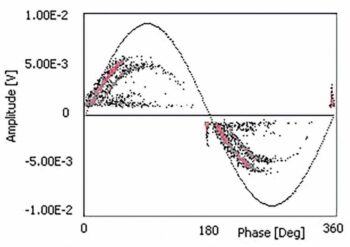Electrical insulation is a fundamental component of all electrical and electronic systems, providing a critical barrier that prevents unwanted current flow between conducting parts. The integrity of insulation is paramount for the safe and efficient operation of these systems. However, insulation materials are subject to various stresses and degradation mechanisms over their operational life, one of the most significant being partial discharge (PD). This essay explores the mechanisms through which partial discharge affects electrical insulation, the implications for system performance and safety, and the strategies employed to mitigate its effects.
Partial Discharge: the principle
Partial discharge occurs when an electrical discharge happens within a localized area of the insulation system but does not completely bridge the electrodes between which the voltage is applied. This phenomenon typically arises in voids, cracks, or at interfaces within the insulation material where the electric field concentration exceeds the local dielectric strength. PD can be initiated by several factors, including manufacturing defects, insulation aging, and exposure to extreme environmental conditions.
Mechanisms of PD-Induced Insulation Degradation
The degradation of insulation due to PD involves complex physical and chemical processes, which can be broadly categorized into thermal, electrical, and chemical mechanisms.
- Thermal Mechanisms. The energy dissipated during PD events generates localized heat, which can cause thermal decomposition of the insulation material. Over time, repeated PD cycles can lead to the formation of carbonized paths within the insulation, significantly reducing its dielectric strength.
- Electrical Mechanisms. PD can result in the formation of conductive channels within the insulation material, leading to an increase in local current flow and further electrical stress. This process can escalate, eventually causing electrical breakdown and failure of the insulation system.
- Chemical Mechanisms. The high-energy electrons and ions generated during PD can interact with the insulation material, leading to oxidative degradation and the breakdown of molecular chains. This chemical alteration not only reduces the material’s dielectric strength but also its mechanical integrity.
Implications of PD on System Performance and Safety
The effects of PD on electrical insulation have significant implications for the performance and safety of electrical systems. PD-induced degradation can lead to insulation failure, resulting in unplanned outages, equipment damage, and, in severe cases, electrical fires or explosions. Additionally, PD can compromise system efficiency by increasing power losses and necessitating more frequent maintenance and repairs.
Mitigation Strategies
Given the detrimental effects of PD on electrical insulation, several strategies have been developed to mitigate its impact.
- Optimizing insulation design to minimize electric field concentrations can significantly reduce the likelihood of PD initiation. This includes the use of uniform insulation materials, the elimination of air voids, and the application of stress-grading materials at critical interfaces.
- Early detection of PD activity is crucial for preventing insulation failure. Advanced monitoring techniques, such as ultrasonic detection, electrical pulse measurement, and optical sensing, allow for the identification and localization of PD sources before significant damage occurs.
- The development of new insulation materials with higher dielectric strength and resistance to thermal, electrical, and chemical degradation can enhance the longevity and reliability of electrical systems. Nanocomposites and other advanced materials are being explored for their potential to improve insulation performance in the presence of PD.
- Controlling the environmental factors that contribute to PD initiation, such as moisture, temperature, and chemical contaminants, can significantly reduce the risk of PD-induced insulation degradation.
Conclusion
Partial discharge represents a significant threat to the integrity and performance of electrical insulation systems. Understanding the mechanisms through which PD induces insulation degradation is essential for developing effective mitigation strategies. Through improved insulation design, advanced monitoring techniques, material innovation, and environmental control, the impact of PD on electrical systems can be significantly reduced, enhancing their safety, reliability, and longevity.
Inside DEIS, the Technical Committee on Diagnostics is involved in topics relevant to partial discharges. Please visit the Technical Committee webpage for more details.

